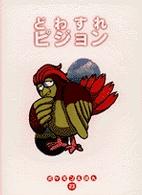- ホーム
- > 洋書
- > 英文書
- > Psychology
Full Description
This fascinating and highly original book presents a longitudinal systematic study of the earliest form of human dreaming in a child, from ages 4 through 10.
Claudio Colace draws upon his extensive research on children's dreams, his expertise in brain science and an intimate knowledge of a single subject, his son Marco, to demonstrate the validity of an ontogenetic approach to the understanding of dream processes. The availability of 'first-hand' information about the daytime experiences of the author's son in relation to dream contents, as well as the longitudinal approach of the study, prove to be useful for a qualitative in-depth analysis of the nature and function of infantile dreams and of the changes that occur in the dreaming process as the child grows, from the early forms to more complex ones. Affirming the significance of Freud's explorations of infantile dreaming, this book attests to the nature of dreaming as a meaningful psychic act rather than the result of random processes.
Expanding beyond a purely psychotherapeutic context, the book analyzes the development of dreams systematically and in relation to Freud's theories on the human mind, making it an important read for clinicians, scholars and researchers interested in dream functions, child development and psychodynamic theory.
Contents
Introduction Part 1: Methodological aspects of the study 1. The credibility of children's dream reports 2. The methodology of this study Part 2: The debut of dreaming activity: infantile dreams (ages four to five) 3. The predominance of clear wish-fulfilment dreams 4. Nature of the wishes appearing in dream reports 5. Daytime sources and triggering conditions of clear wish-fulfilment dreams 6. How do dreams act? The modus operandi of clear wish-fulfilment dreams 7. Less common forms of dreaming in infancy Part 3: The decline of infantile forms of dreaming (ages six to seven) 8. Changes in dream repertoire and developments in wish-fulfilment dreaming 9. Development of dream bizarreness and dream-work operations 10. Bad dreams 11. Ego and super-ego development and changes in dreaming Part 4: Dreaming in middle childhood (ages eight to ten) 12. Changes in dream repertoire and developments in wish-fulfilment dreams at ages 8-10 13. Dream distortion and new dream-works operations 14. Changes in bad dreams Part 5: The meaning and function of infantile dreams 15. The function of dreams: the affective-reestablishment (AR) hypothesis 16. Infantile forms of dreaming in adults 17. A new ontogenetic psychological-psychoanalytic model of dream Conclusions








